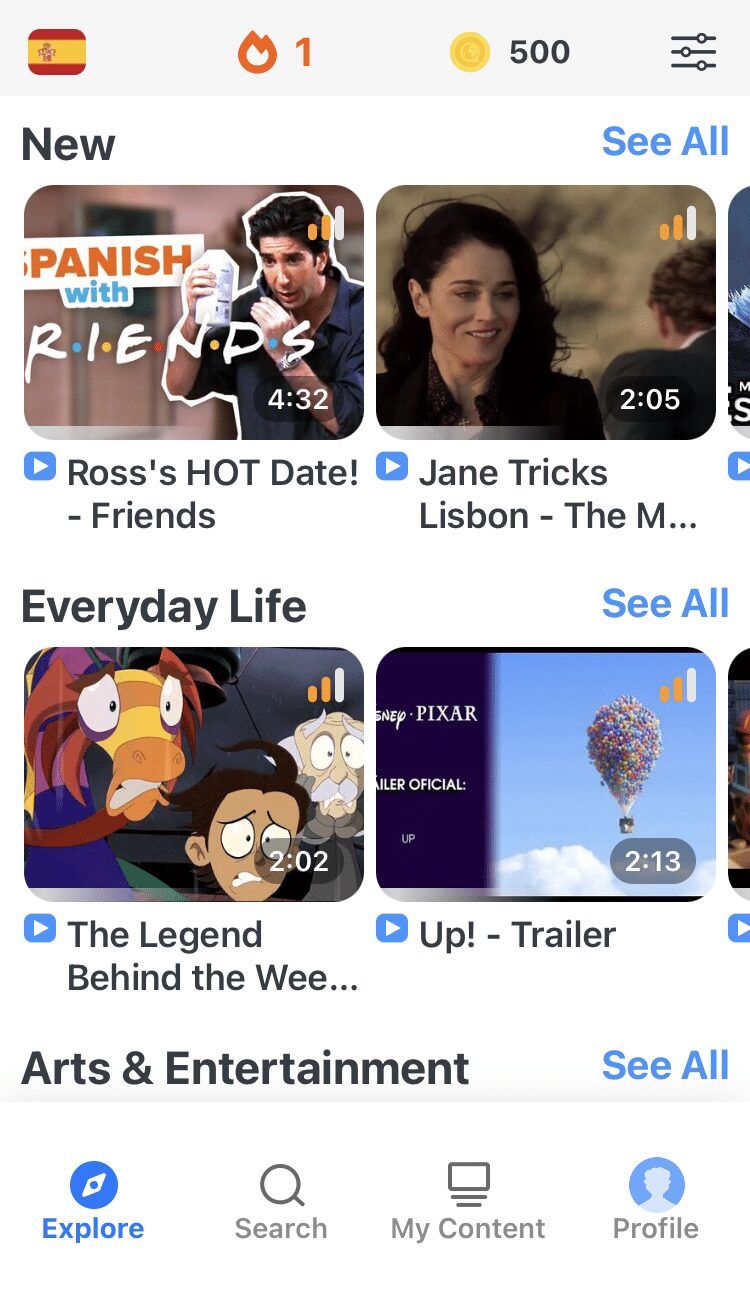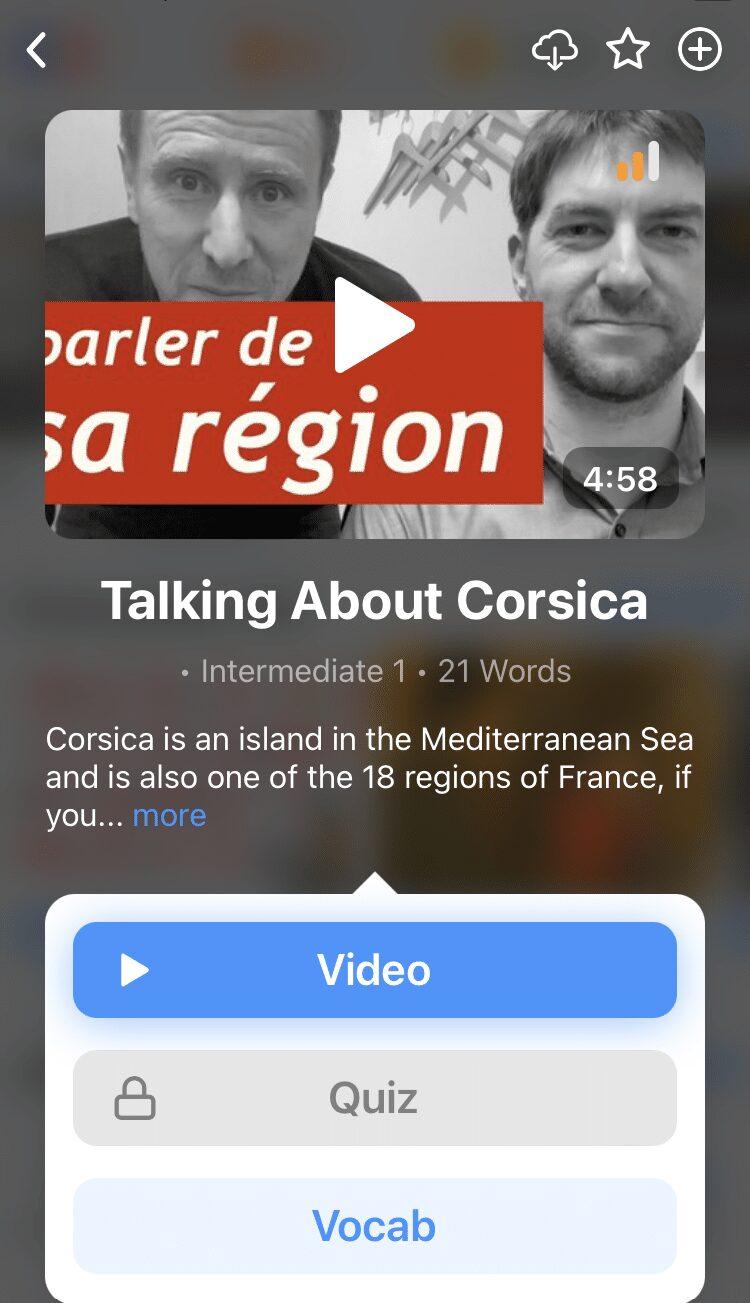Contents
- What Makes Some Languages Similar?
- Similar Romance Languages
- Similar Germanic Languages
- Similar Scandinavian Languages
- Similar Slavic Languages
- Similar Semitic Languages
- Similar East Asian Languages
- Similar South Asian languages
- More Similar Language Pairs
- Why is it Useful to Be Aware of Similar Languages?
- And One More Thing...
16 Similar Language Pairs for Bonus Learning

If you’re asking yourself “what language should I learn?” then let me introduce you to the idea of learning similar languages. Whether you’re trying to learn several new languages quickly, or you just want to learn a language that’s not far from your native tongue, understanding which ones are similar is your first step.
We’ll show you 16 sets of similar languages that you can pair together for easy learning, some of which may surprise you.
Download: This blog post is available as a convenient and portable PDF that you can take anywhere. Click here to get a copy. (Download)
What Makes Some Languages Similar?
The reason that some languages are so similar is that they’re part of the same language family. We’d love to tell you that language families are formed when two languages love each other very much. However, language families are actually just formed of languages that share a common ancestor.
Related languages are also usually close geographically, though that isn’t always the case.
Due to their shared origins, languages within the same family often possess something called “lexical similarity.” Lexical similarity is a measure of how much vocabulary two languages share.
This can also lead to “mutual intelligibility,” which occurs when a speaker of one language can understand a speaker of another language with little effort. Many similar languages have some degree of mutual intelligibility, which can aid significantly in learning grammar and overcoming the language barrier.
If you’re learning a language, you might also consider learning a language similar to your target language since they have so much in common.
To illustrate the similarities between the language pairs below, I used a handful of example sentences:
- I like reading books.
- You make me happy.
Wherever these sentences didn’t adequately show off the similarities, I opted for a different sentence (or two) that are better suited for the occasion.
Read on and learn about some languages that make great linguistic couples!
Similar Romance Languages
Romance languages stemmed from a form of Latin, and you’re probably already aware of how similar these languages are, at least in passing. Romance languages include Spanish, French, Italian, Portuguese and Romanian. That’s right! Even though it’s geographically distant, Romanian is related to these other Romance languages.
The degree of mutual intelligibility varies greatly between language pairs. Here are some pretty similar pairs:
1. Spanish and Portuguese
The most mutually intelligible pair of Romance languages is Spanish and Portuguese. In some cases, TV stations don’t even translate between the two languages, instead assuming that Spanish-speaking audiences would understand Portuguese and Portuguese-speaking audiences would understand Spanish.
Perhaps the most notable difference between the two languages is in pronunciation. You’re likely to understand everything you read if you’re reading either language while familiar with the other, but you’ll have more trouble understanding them when they’re spoken out loud.
Examples:
Spanish: Me gusta leer libros
Portuguese: Eu gosto de ler livros
English: I like reading books
2. Spanish and Italian
Spanish and Italian also have some degree of mutual intelligibility. The two languages are very similar both structurally and in terms of vocabulary, featuring many cognates between them. As with Portuguese, though, Italian sounds quite different from Spanish when it’s spoken out loud, so you might have more luck understanding if you see the languages written down.
In fact, Spanish is particularly intelligible to speakers of other Romance languages, no matter what language you’re coming from.
Examples:
Spanish: Me gusta leer libros
Italian: Mi piace leggere libri
English: I like reading books
Spanish: Me haces feliz
Italian: Mi fai felice
English: You make me happy
3. Italian and Romanian
Romanian is the most dissimilar from its linguistic siblings, making it more difficult for speakers of other Romance languages to understand. Still, according to the book “The Romance Languages,” 70% of the words between Italian and Romanian are considered “look-alike words”—that is, exact or close cognates.
Examples:
In this case, the two example sentences I’ve been using aren’t the best for showing off the languages’ similarities. Here’s a different sentence that better displays how the languages resemble each other:
Italian: Mi piace andare al mare
Romanian: Îmi place să merg la mare
English: I like going to the sea/beach
Italian: La mia famiglia è molto importante per me
Romanian: Familia mea este foarte importantă pentru mine
English: My family is very important to me
4. French and Occitan
French and Occitan are closely related languages, both belonging to the Romance language family. While they share certain linguistic features and have a common historical origin, they aren’t mutually intelligible to a high degree, especially in spoken form. However, speakers of one language might find some similarities in vocabulary and grammar that could assist in understanding basic written texts or simple spoken sentences from the other language.
Occitan is a Romance language spoken primarily in southern France, as well as in parts of Spain and Italy. It has several dialects, each with its own characteristics. The language has a rich literary tradition, particularly in poetry and troubadour songs from the medieval period.
Examples:
French: Je vais au marché ce matin
Occitan: Vau al mercat aqueste matin (Voh ahl mehr-kah a-kwes-teh ma-teen.)
English: I’m going to the market this morning
Similar Germanic Languages
The Germanic language family covers Central through Northern Europe and includes languages that stem from the Proto-Germanic language spoken around 500 BC in Northern Europe.
Germanic languages aren’t as mutually intelligible as Romance languages. Some northern and southern dialects of German aren’t even mutually intelligible!
While the degree of mutual intelligibility is significantly less than that of Romance languages, German, English, Dutch and Afrikaans do have some overlap, particularly in writing.
Apparently, there’s enough overlap that it makes it possible for about 90% of Dutch people to be able to speak English, as indicated in the FluentU YouTube video below:
This group of languages can also be called “West Germanic.”
5. Afrikaans and Dutch
Since Afrikaans is derived from Dutch, it should perhaps come as no surprise that these two languages are largely mutually intelligible. However, as with many other language pairs, you’ll find that the spoken language is more difficult to decipher—and that you’ll have an easier time learning Dutch if you already speak Afrikaans, in particular.
Examples:
Afrikaans: Ek hou van lees boeke (Ehk how fahn lees boo-kuh.)
Dutch: Ik hou van het lezen van boeken (Ihk how fahn het lay-zuhn vahn boo-kuhn.)
English: I like reading books
6. German and English
You might know that Spanish and English have some similarities, especially in terms of vocabulary, but English is actually a Germanic language. That means that there are quite a few similarities between German and English, especially in terms of sentence structure, word order and grammar rules. Vocabulary isn’t as similar between the two, but you’ll definitely be able to find some familiar words between the two.
Examples:
German: Sie ist eine gute Freundin
English: She is a good friend
7. German and Dutch
Dutch and German are closely related languages, but they’re not mutually intelligible to a high degree. Some shared vocabulary and similarities in grammar mean that speakers of one language might be able to understand a bit of the other. You’ll find it easier to understand the written language than the spoken (in either direction).
That said, the differences in pronunciation, vocabulary and certain grammatical structures can make it challenging for speakers of one language to fully understand the other without prior exposure or study.
Examples:
Dutch: Jij maakt me gelukkig (Yay mahkt muh ghuh-look-khuh.)
German: Du machst mich glücklich
English: You make me happy
You can study multiple languages like these in a language program like FluentU.
FluentU takes authentic videos—like music videos, movie trailers, news and inspiring talks—and turns them into personalized language learning lessons.
You can try FluentU for free for 2 weeks. Check out the website or download the iOS app or Android app.
P.S. Click here to take advantage of our current sale! (Expires at the end of this month.)
Similar Scandinavian Languages
Though technically considered a Northern Germanic group, Scandinavian languages are much more similar to one another than they are to other Germanic languages.
Danish, Norwegian, Swedish and Icelandic are all considered Scandinavian languages. However, while Danish, Norwegian and Swedish are fairly closely linked, Icelandic is more distant.
8. Norwegian and Swedish
The Nordic Council notes that while there’s some mutual intelligibility, this seems to vary a great deal between groups of speakers. For instance, young Norwegians are able to understand more Scandinavian languages due to their familiarity with dialects. Young Danes, on the other hand, have much greater difficulty understanding other Scandinavian languages.
Norwegian and Swedish are very closely related, so they share many grammar constructs and much of the vocabulary is nearly identical. You should watch out for some false cognates, but in general, the two languages are said to be “nearly identical” by native speakers, and it’s not unusual to see a conversation where one person is speaking Swedish and the other responds in Norwegian.
Examples:
Norwegian: Jeg liker å lese bøker (Yay lee-kehr oh lay-suh buh-kehr.)
Swedish: Jag gillar att läsa böcker (Yahg yee-lahr aht lay-sah bök-ehr.)
English: I like reading books
Norwegian: Du gjør meg lykkelig (Doo yur may leek-kay-lee.)
Swedish: Du gör mig lycklig (Doo yur meeg lük-kleeg.)
English: You make me happy
9. Norwegian and Danish
Danish might look nearly indistinguishable from Norwegian in its written form, the language sounds quite different when it’s spoken due to differences in pronunciation and intonation. Danish is said to have a “softer” sound than the Norwegian’s more clipped sound.
Examples:
Norwegian: Jeg liker å lese bøker (Yay lee-kehr oh lay-suh buh-kehr.)
Danish: Jeg kan lide at læse bøger (Yay kahn lee-duh aht lay-suh böh-er.)
English: I like reading books
Similar Slavic Languages
The Slavic language family is a large group of languages spread throughout Eastern and Central Europe. The language group is thought to have originated in the Early Middle Ages from the Proto-Slavic language. The family includes Russian, Ukrainian, Belarusian, Polish, Bulgarian, Serbian, Croatian, Bosnian, Slovene, Macedonian, Czech and Slovak.
10. Ukrainian and Polish
While you might think that Russian and Ukrainian are similar, they’re not really mutually intelligible at all. A Ukrainian speaker might understand some Russian, but Russian speakers don’t understand Ukrainian—as a Russian speaker with a mother who knows some Ukrainian, I can definitely confirm this!
However, Ukrainian and Polish sound more similar and are easier for speakers to understand. This is despite the fact that the two languages belong to different subgroups of Slavic languages, with Ukrainian coming from the East Slavic branch and Polish belonging to the West Slavic branch.
So where do these two languages’ close relation come from? History, naturally! When Poland had control over Ukraine in the 14th century, the official language in Ukraine was changed to Polish, and many Ukrainian nobles learned Polish. While Russian also had control over Ukraine for a period in history, by then the language was undergoing efforts to be standardized and so wasn’t affected in the same way. (This is gross simplification—if you’re interested in the topic, you can learn much more in this chronology of the Ukrainian language.)
Examples:
Ukrainian: Це місто дуже красиве влітку (Tse misto duzhe krasive vlitku.)
Polish: To miasto jest bardzo piękne latem (Toh mias-toh yest bar-dzoh pyen-kneh la-tem.)
English: This city is very beautiful in the summer
11. Serbian, Croatian, Montenegrin and Bosnian
I’m cheating a little here, as this clearly isn’t a language pair. But these four languages are so similar that they’re often lumped together as one language: Serbo-Croatian. According to writer and linguist Robert Lindsay, Serbo-Croatian is also partially mutually intelligible with other languages, most notably Macedonian.
These sentences are virtually identical across these languages due to their shared linguistic characteristics!
Examples:
Serbian: Sviđa mi se čitanje knjiga (Svee-jda mee seh chee-tahn-yeh knee-gah.)
Croatian: Sviđa mi se čitanje knjiga (Svee-jda mee seh chee-tahn-yeh knee-gah.)
Montenegrin: “Sviđa mi se čitanje knjiga (Svee-jda mee seh chee-tahn-yeh knee-gah.)
Bosnian: Sviđa mi se čitanje knjiga (Svee-jda mee seh chee-tahn-yeh knee-gah.)
English: I like reading books
12. Bulgarian and Macedonian
Macedonian developed as a dialect of Bulgarian and didn’t become an official language until 1944! In fact, some linguists still hold that Macedonian is a Bulgarian dialect. As such, the two languages are, unsurprisingly, pretty similar.
Although they’re similar in both directions, it’s generally easier for Bulgarian speakers to understand Macedonian than vice versa.
Examples:
Bulgarian: Ти правиш ме щастлив (Ti pravish me shtastliv.)
Macedonian: Ме правиш среќен (Me pravish srekjen.)
English: You make me happy
13. Czech and Slovak
Czech and Slovak both come from the former Czechoslovakia, a country that existed for most of the 20th century. While Czech and Slovak are distinct languages, they’ve influenced each other over the years thanks to a shared government and educational system for nearly a century.
The languages are highly mutually intelligible, with similarities across grammar, syntax and vocabulary.
Examples:
Czech: Mám rád číst knihy (Mam rahts keest kneehy.)
Slovak: Mám rád čítať knihy (Mam raht chy-taht kneehy.)
English: I like reading books
Czech: Děláš mě šťastný (Deh-lahsh meh shtahst-nee.)
Slovak: Robíš ma šťastný (Roh-beesh mah shtahst-nee.)
English: You make me happy
Similar Semitic Languages
Semitic languages are a branch of the Afroasiatic language family and are primarily spoken in the Middle East and parts of North Africa. They’re among the world’s oldest and most influential language groups.
Please note that the level of mutual intelligibility can vary significantly within these pairs, and it might not be as high as in some of the Romance or Germanic language pairs mentioned earlier. This is largely due to the fact that the languages, despite sharing a common ancestry in Proto-Semitic, have evolved independently over millennia.
That said, there are still some similarities across Semitic language pairs. For instance, many Semitic languages, including Arabic and Hebrew, use a triconsonantal root system. Words are often formed around a core of three consonants, and changes in vowels and additional consonants modify the meaning and function of words.
From personal experience, I’ve lived in Israel where I spoke Hebrew, and I couldn’t understand a lick of Arabic. I’ll highlight one interesting Semitic language pair that’s worth mentioning here:
14. Arabic and Maltese
Arabic and Maltese are related languages, with Maltese being heavily influenced by Arabic due to centuries of contact and historical connection. While Maltese is a unique language and written in the Latin script, it has borrowed a substantial amount of vocabulary and some grammatical structures from Arabic.
While Maltese is heavily influenced by Arabic, it also has significant influence from Italian and English due to Malta’s history. As such, though Maltese and Arabic share similarities, they’re not fully mutually intelligible.
Examples:
Here’s a beautiful example:
Maltese: Il-ħajja hija qalb ta’ kull kuljum (Il-hai-yah hee-yah kahlb tah kool kool-yoom.)
Arabic: Al-ḥayāh hiya qalb kull yawm (Al-hai-yah hee-yah kahlb kool yawm.)
English: Life is the heart of every day
Similar East Asian Languages
East Asian languages refer to a group of languages spoken in the eastern part of Asia, primarily in countries such as China, Japan, Korea and Taiwan.
Pairs of East Asian languages that are at least partially mutually intelligible are quite rare due to the significant linguistic differences in this language family. However, here are a couple of examples where some level of mutual intelligibility exists to a fairly small degree:
15. Mandarin Chinese and Hokkien (Min Nan)
Mandarin Chinese and Hokkien are members of the Sino-Tibetan language family, and due to historical and cultural interactions they have limited mutual intelligibility. However, the degree of intelligibility can vary widely depending on the dialects and the speaker’s exposure to both languages. In other words… this one’s a bit of a stretch, but I thought it worth including for the sake of being thorough!
Both languages are tonal (though Hokkien has more tones, with the actual number varying by dialect). You might also find similarities in hanzi and vocabulary between the two languages.
However, grammar and pronunciation are fairly different between the two. In particular, Mandarin and Hokkien have distinct phonological systems, including different consonant and vowel sounds. The sound of a word can be quite different when comparing the two languages.
Examples:
Mandarin Chinese: 你让我快乐。(Nǐ ràng wǒ kuàilè.)
Hokkien (Min Nan): 你令我歡喜 (Lí līng guá huān-hí)
English: You make me happy
Similar South Asian languages
The South Asian language family, also known as the Indo-Aryan language family, is a branch of the larger Indo-European language family. It is primarily spoken in South Asia, which includes countries such as India, Pakistan, Bangladesh, Nepal, Sri Lanka, and parts of Afghanistan. This language family is rich and diverse, with numerous languages and dialects.
Within the South Asian language family, there are some pairs of mutually intelligible languages, but they’re often the exception rather than the rule. The majority of languages in this family are distinct and not mutually intelligible due to differences in vocabulary, grammar, pronunciation and script.
16. Hindi and Urdu
Hindi and Urdu are both standardized registers of the Hindustani language and share a significant amount of vocabulary and grammar. The two languages share grammar and sentence structure, as well as a significant portion of their vocabulary, especially for everyday words and concepts, making it relatively easy for speakers of the languages to be able to understand each other.
The most significant difference between Hindi and Urdu lies in their writing systems: Hindi is typically written in the Devanagari script, which is a script of Indian origin, while Urdu uses a modified form of the Arabic script. However, the spoken language is highly similar, and many words are pronounced the same way.
Examples:
Hindi: तुम मुझे खुशी देते हो। (Tum mujhe khushi dete ho.)
Urdu: تم مجھے خوشی دیتے ہو۔ (Tum mujhe khushi dete ho.)
English: You make me happy
Hindi: मुझे पढ़ना पसंद है। (Mujhe padhna pasand hai.)
Urdu: مجھے پڑھنا پسند ہے۔ (Mujhe parhna pasand hai.)
English: I like to read
More Similar Language Pairs
Want even more language pairs? While the language pairs below are not quite mutually intelligible, knowing one can help you learn the other:
- Gaelic and Irish: Gaelic and Irish are both part of the Celtic language family, specifically the Goidelic branch. Gaelic typically refers to Scottish Gaelic, which is spoken in Scotland, while Irish refers to the Irish language, spoken in Ireland. These languages share a common linguistic heritage and have similarities due to their shared Celtic origins.
- Japanese and Korean: Although they belong to different language families, Japanese and Korean have linguistic similarities like shared vocabulary and grammatical concepts due to historical and cultural interactions.
- Japanese and Ryukyuan languages: Ryukyuan languages, including Okinawan, have historical ties to Japanese and share certain linguistic elements. While not mutually intelligible, knowing Japanese can provide some insight into Ryukyuan languages.
- Arabic and Persian: Arabic and Persian belong to different language families but have had extensive cultural interactions. As a result, they share some vocabulary and linguistic features.
- Finnish and Estonian: These Uralic languages share linguistic roots, although they have evolved separately. Some vocabulary and grammatical patterns are similar.
- Malay and Indonesian: These Austronesian languages share a high degree of mutual intelligibility due to their common origin. While differences exist, speakers of one can often understand the other.
- Swahili and Zulu: These Bantu languages share certain linguistic features and vocabulary due to their common Bantu roots.
- Thai and Lao: Thai and Lao are closely related Tai-Kadai languages. While not mutually intelligible, they do share some vocabulary and grammar concepts.
Why is it Useful to Be Aware of Similar Languages?
One reason it’s useful to be aware of similar languages is because you may actually be able to understand one language by speaking another. You might even be able to do some language exchange right off the bat without knowing much about the similar language.
Additionally, you may have an easier time learning a similar language once you know its cousin. Since similar languages often share some grammar rules and vocabulary, you may already know key details, so it’s like getting a running start on the road to fluency.
Finally, being aware of similar languages will help you understand more about the roots of the language. Languages are traditionally similar because they stem from the same root language.
Therefore, if you learn two languages from the same linguistic family, you can see how the original language influenced its descendants. That’ll give you valuable insights into the ones you’re learning.
While they may seem similar, each language is still unique and worth learning. If you pair a similar language with your target language, though, it’ll make learning them so much easier than learning two unrelated languages!
And One More Thing...
If you dig the idea of learning on your own time from the comfort of your smart device with real-life authentic language content, you'll love using FluentU.
With FluentU, you'll learn real languages—as they're spoken by native speakers. FluentU has a wide variety of videos as you can see here:
With FluentU's Chrome extension, you can bring interactive learning tools directly to YouTube or Netflix, and even import your favorite YouTube videos directly into your FluentU account.
FluentU has interactive captions that let you tap on any word to see an image, definition, audio and useful examples. Now native language content is within reach with interactive transcripts.
Didn't catch something? Go back and listen again. Missed a word? Hover your mouse over the subtitles to instantly view definitions.
You can learn all the vocabulary in any video with FluentU's "learn mode." Swipe left or right to see more examples for the word you’re learning.
And FluentU always keeps track of vocabulary that you’re learning. It gives you extra practice with difficult words—and reminds you when it’s time to review what you’ve learned. You get a truly personalized experience.
Start using the FluentU website on your computer or tablet or, better yet, download the FluentU app from the iTunes or Google Play store. Click here to take advantage of our current sale! (Expires at the end of this month.)











